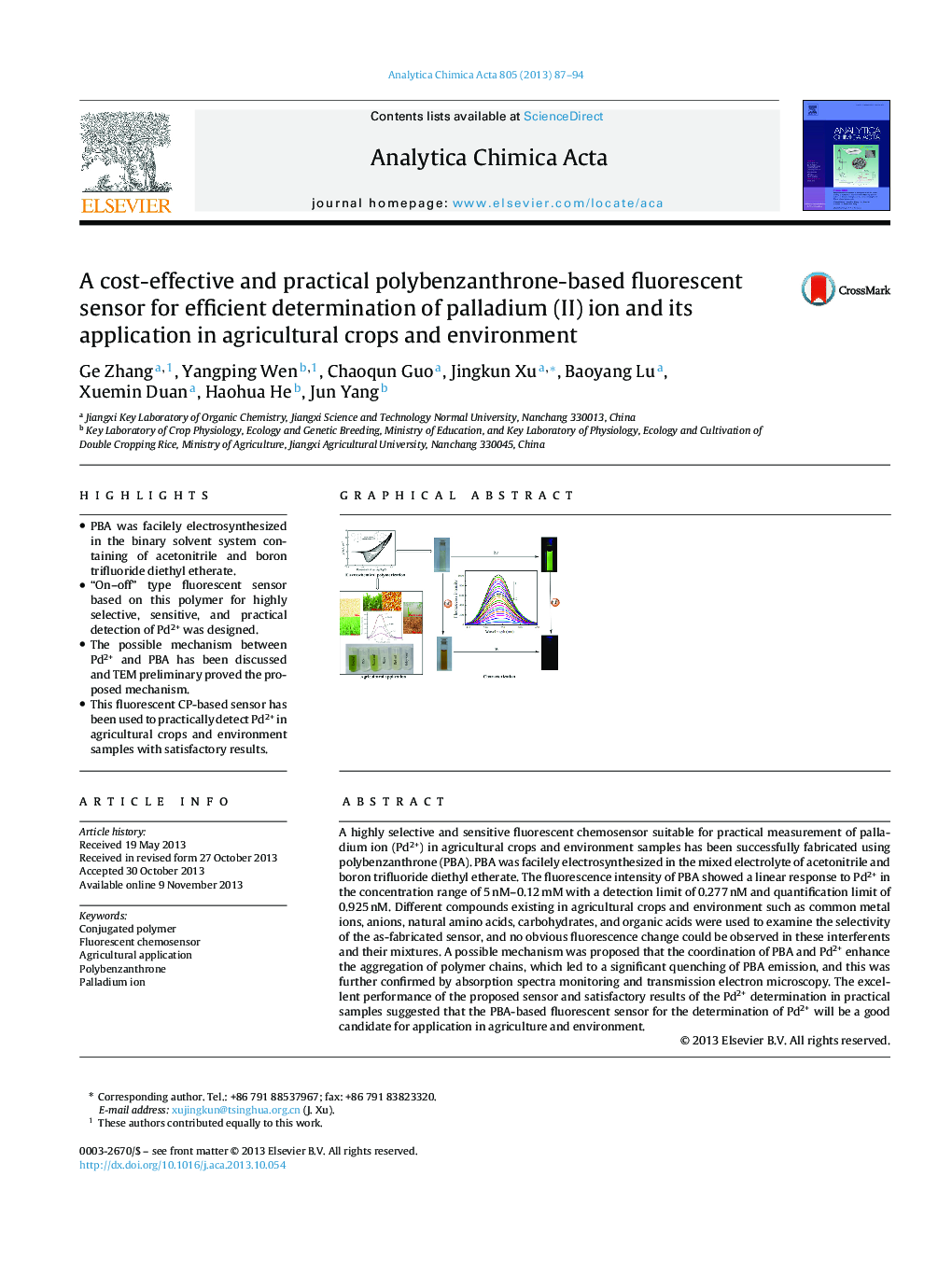| کد مقاله | کد نشریه | سال انتشار | مقاله انگلیسی | نسخه تمام متن |
|---|---|---|---|---|
| 1165066 | 1491027 | 2013 | 8 صفحه PDF | دانلود رایگان |

• PBA was facilely electrosynthesized in the binary solvent system containing of acetonitrile and boron trifluoride diethyl etherate.
• “On–off” type fluorescent sensor based on this polymer for highly selective, sensitive, and practical detection of Pd2+ was designed.
• The possible mechanism between Pd2+ and PBA has been discussed and TEM preliminary proved the proposed mechanism.
• This fluorescent CP-based sensor has been used to practically detect Pd2+ in agricultural crops and environment samples with satisfactory results.
A highly selective and sensitive fluorescent chemosensor suitable for practical measurement of palladium ion (Pd2+) in agricultural crops and environment samples has been successfully fabricated using polybenzanthrone (PBA). PBA was facilely electrosynthesized in the mixed electrolyte of acetonitrile and boron trifluoride diethyl etherate. The fluorescence intensity of PBA showed a linear response to Pd2+ in the concentration range of 5 nM–0.12 mM with a detection limit of 0.277 nM and quantification limit of 0.925 nM. Different compounds existing in agricultural crops and environment such as common metal ions, anions, natural amino acids, carbohydrates, and organic acids were used to examine the selectivity of the as-fabricated sensor, and no obvious fluorescence change could be observed in these interferents and their mixtures. A possible mechanism was proposed that the coordination of PBA and Pd2+ enhance the aggregation of polymer chains, which led to a significant quenching of PBA emission, and this was further confirmed by absorption spectra monitoring and transmission electron microscopy. The excellent performance of the proposed sensor and satisfactory results of the Pd2+ determination in practical samples suggested that the PBA-based fluorescent sensor for the determination of Pd2+ will be a good candidate for application in agriculture and environment.
Figure optionsDownload as PowerPoint slide
Journal: Analytica Chimica Acta - Volume 805, 17 December 2013, Pages 87–94